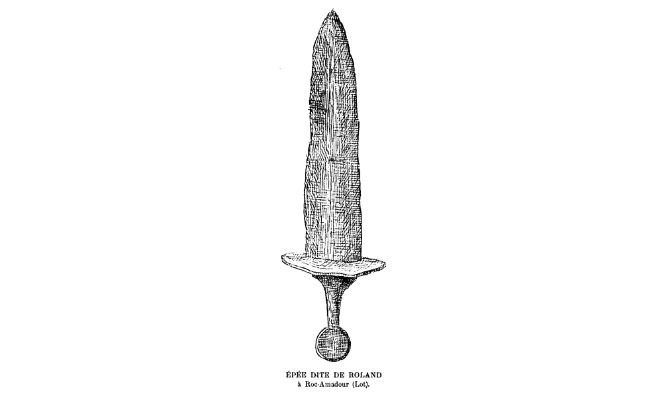Throughout the years, swords have been used for different purposes, such as for swordsmanship, protection, and sometimes for rituals. Various types of swords come in several sizes and purposes. Although there are quite a several lists of swords and weapons out there, there are those swords that are more famous than others. These are the swords that faced a lot of challenges and were wielded by notable epic heroes,making them moreprominent than others.
What is the Sword Durendal?
Durendal or Durandal is one of the most famous swords in history.In the legendary French epic, the sword was wielded by one of Charlemagne’s paladins and nephew, Roland. At one point, the sword Durendal was believed to be initially owned by Charlemagne before it was passed down to Roland.
The sword, Durendal, on the other hand, has several provenances. However, the Carolingian Cycle materials proved that it was forged by a legendary blacksmith from Germanic mythology, Wayland the Smith.
With regard to the sword’s name, Durendal came from the French word ‘dur,’ meaning ‘hard.’ Consequently, Rita Lejeune, a literary historian, asserted that the word Durendal might be break into two words –’durant’ and ‘dail.’ She explained that ‘durant’and ‘dail’ could be rendered in English as ‘strong scythe.’ Additionally, Gerhard Rohlfs, a German linguist, suggested that the word Durendal may mean ‘strong flame.’ The name could also connote or mean ‘enduring.’
What Does the Sword Durendal Look Like?
According to the 11th-century epic poem, La Chanson de Roland (The Song of Roland), an angel brought Durendal to Charlemagne. Charles, who was at the vale of Moraine, then gave the sword to Roland. According to the poem, the sword’s golden hilt has Saint Peter’s tooth, Saint-Denis’ hair, the blood of Basil of Caesarea, as well as a piece of Mary’s (mother of Jesus) raiment. Using the sword, Roland was said to have killed a vast number of enemies.
Aside from that, Durendal was proven to be indestructible. In fact, when Roland was chased by Saracens, he tried to destroy the sword by hitting it against a block of marble, but he failed. The sword was also powerful enough to cut through giant boulders in just a single strike in addition to its indestructible characteristic.
After Roland was mortally wounded in the encounter, he hid Durendal beneath his body. However, Roland didn’t die from his injuries, but from the force he used in blowing the Olifant. He blows the horn with so much force –to alert King Charlemagne and subsequently died after his temple burst.
Various Origin of Durendal
In the 12th century French epic poem, Chanson de GesteMainet (Song of Heroic Deeds; ‘Mainet’ is said to be Charles pseudonym), the story was different from what is told in the Song of Roland. According to the story, Young Charles had captured the ‘Durendaus’ sword, although he did not keep it after killing the sword’s owner, Braimant. Also, based on Karl Mainet, a Low-German version, the battle happened near the VaelMoriale (Vale of Moraine), near Toledo.
On the other hand, according to Chanson de GesteAspremont, before Roland had Durendal, the owner was said to be the son of King Agolant, Aumon, a Saracen. In this tale, Roland was said to defeat Aumon and conquered his sword, and the horse Veillantif. In the 14th to 15th century, on Italian prose called Aspramonte by Andrea da Barberino, the materials from Aspremont and Mainet version were combined.
Local folklore about the sword Durendal
According to the locals of Rocamadour, the real Durendal sword was deposited in a chapel there. However, the former King of England, Henry Curtmantel, stolen the sword in 1183.
In addition to the sword’s several histories, the 12th-century monks of Rocamadour claim that Roland threw the sword instead of hiding it beneath his body.The folklore claimed that the mythological Durendal sword still exists and is embedded on the cliff on a wall in Rocamadour.Also, it is said that because of the sword’s sharpness, it had created a crevice on the wall where Roland threw it. However, some locals said that the sword on the wall’s crack was just the replica of the real sword, Durendal.

